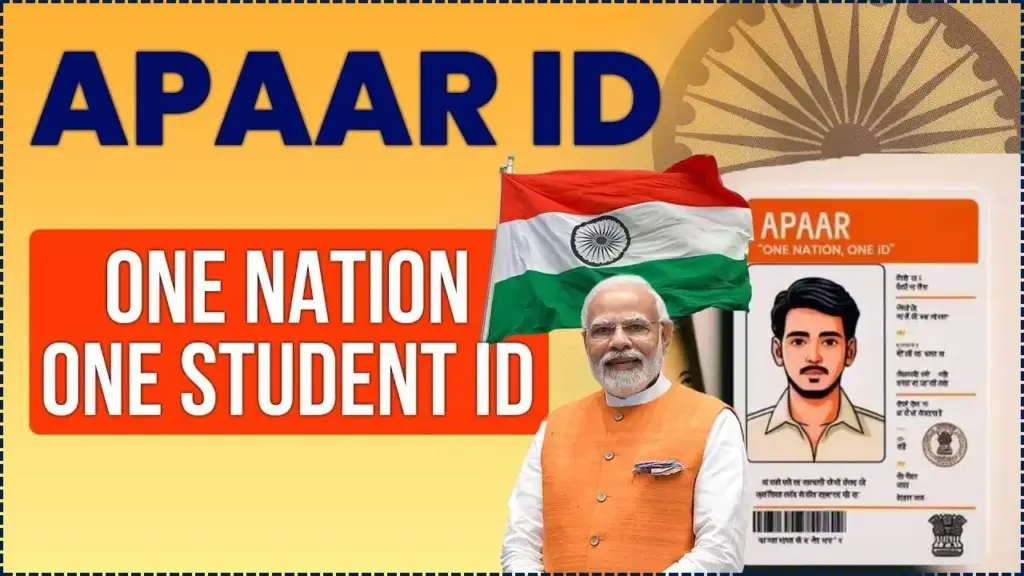The One Nation One Student ID initiative, also known as the APAAR card, aims to provide a unique academic identity for students in India. This card, a part of the National Education Policy (NEP) 2020, consolidates all educational records under a single, easily accessible digital ID. Here’s how students can check their APAAR card online.

The APAAR card is an essential step towards modernizing India’s education system, offering students a unique and easily accessible digital identity. By providing a centralized platform for academic records, it enhances transparency, security, and mobility for students across the country. While the process of obtaining and checking the card may still face some teething issues, the long-term benefits for students and the education system are significant.
What is the One Nation One Student ID (APAAR) Card?
The One Nation One Student ID, or the APAAR card, is part of India’s education reforms aimed at streamlining the academic identity of students. This digital identity consolidates all academic records, such as marksheets, certificates, and co-curricular activities, into a unified digital profile. The card ensures easy access to a student’s academic journey and enables smoother credit transfers between institutions.
This initiative also integrates with the Academic Bank of Credits (ABC) and DigiLocker, enabling students to securely store their academic credentials. The goal is to reduce administrative paperwork, improve mobility between educational institutions, and allow lifelong access to academic records.
Check Your One Nation One Student ID (APAAR) Card Online
If you are a student looking to access your APAAR card, the process is straightforward. Below is a step-by-step guide to checking your card online:
Register for the APAAR Card
Before checking the APAAR ID, ensure that you have registered for it through your educational institution. For students under 18, parental consent is required, and schools must verify the student’s information, such as Aadhaar details and academic history, before submitting it to the Academic Bank of Credits (ABC) portal. Once your school uploads your details, your unique APAAR ID will be generated.
Access DigiLocker
The DigiLocker is an integral platform for storing and accessing your APAAR card. To check your card, you must have an active DigiLocker account. If you do not already have one, follow these steps:
- Visit the DigiLocker website or download the DigiLocker app from the Play Store or App Store.
- Sign up using your Aadhaar number and mobile number.
- After completing the registration process, log into your account.
Search for Your APAAR Card in DigiLocker
Once you have logged into DigiLocker:
- Navigate to the “Issued Documents” section.
- Look for the APAAR ID card under the list of documents issued by your educational institution.
- Your card will be displayed along with your academic records, making it easy to access, download, or share when needed.
Download and Share Your APAAR Card
Once your educational identity is secured, the process of accessing and utilizing your APAAR card is designed to be entirely in your control, granting you peace of mind and effortless mobility. After easily locating the card within DigiLocker, you can immediately download it in a portable PDF format for reliable offline access.
And then choose to share it securely via email or a protected link with any educational institution or employer, ensuring your verified academic journey is always available to you and accessible by those who need it, with your consent.
Benefits of the One Nation One Student ID (APAAR) Card
The introduction of the APAAR card offers several advantages for students and the educational system:
- Centralized Record Keeping: All academic records are stored in one place, reducing the risk of losing important documents.
- Ease of Access: Students can quickly access their academic records anywhere and anytime, streamlining university transfers or job applications.
- Secure and Authentic: With DigiLocker integration, students can be assured that their academic credentials are securely stored and tamper-proof.
- Mobility and Flexibility: The APAAR card allows students to move seamlessly between different educational institutions, with their records automatically transferred.
- Lifelong Use: The APAAR ID remains with the student throughout their academic journey, even after graduation, providing lifelong access to academic credentials.
Related Links
Apply for e-Mandi Registration Online in India: Step-by-Step Guide for Farmers
Register for PM Mudra Loan Online: Check Complete Application Process
Check PM Fasal Bima Yojana Crop Insurance Status Online: Here’s How It Works
Challenges and Issues with the APAAR ID Card
While the APAAR card has been well-received, some challenges remain:
- Aadhaar Mismatch: In some cases, discrepancies between a student’s Aadhaar details and institutional records have led to delays in generating the APAAR ID. Students facing such issues may need to resolve them by contacting their school or the educational authority.
- Parental Consent for Minors: Students under 18 require parental consent for registration. Some parents may face difficulties with the process, particularly if they lack the necessary digital literacy or access to technology.
- Verification Delays: The verification process, especially in rural or under-resourced areas, can sometimes cause delays in issuing the APAAR card.
To address these issues, the Ministry of Education has outlined a clear grievance redressal system, where students and institutions can contact support desks for assistance.
Future Prospects of the One Nation One Student ID (APAAR) Card
The One Nation One Student ID initiative is expected to expand significantly as more educational institutions and states embrace the platform. As the integration of educational data systems becomes more seamless, the APAAR card could also evolve to include other features such as:
- Integration with National Scholarships: Linking academic records to national scholarship schemes would help streamline the application process.
- Career Services: The card could also serve as a tool for students to manage internships, job applications, and other career services.
- Increased Global Mobility: The card may eventually be recognized internationally, allowing students to share their academic records with foreign institutions.
















